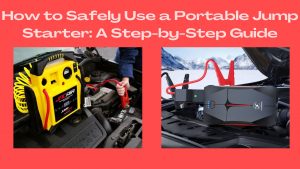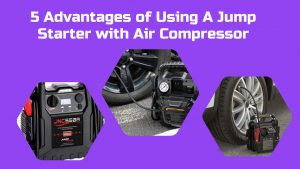The dynamic automotive industry is full of very confusing terminologies. With all the misinformation, half-truth even lies, sometimes it may be difficult for you to drive your dream vehicle. During your car-buying process, you may come across terms that are unfamiliar or confusing. The most probable words that may have come up during your conversations with dealers, manufacturers, or other drivers are the Four-wheel drive and all-wheel drive systems. Understanding these systems that have come with new vehicle models daily on the roads can be very formidable. Car dealers may have used these terms interchangeably, but they mean very different. You need to understand your car or truck’s drivetrain mechanisms and the workings of differentials and engine torque to develop the fuel and maintenance budget of your vehicle. So, how do you tell the difference between an All-wheel drive and a Four-wheel drive?
Why Exist?
As AWD systems grow to be more robust and 4WD systems more sophisticated, you may wonder why they exist?
The AWD systems designers focused on increasing traction during acceleration. The All-wheel drive system enables faster acceleration. Fast acceleration happens when power is sent to your vehicle’s four wheels, limiting the strain on any single wheel, thus reducing the wheel spin.
On the other hand, the 4WD systems provide traction to the other wheels if one tire loses traction or a drive wheel is not in contact with the ground. These other wheels will therefore help pull your vehicle from a stuck position.
How Do These Systems Work?
All-Wheel Drive
AWD systems are for vehicles meant for on-road use. This system is capable of sending engine power to all four tires all the time. Usually, this system will operate without you having to input the command, though, in some vehicles, you can have a degree of control over the power and where its direction. The wheels receive the engine’s torque through viscous couplings, a series of differentials, and multiple clutches. The engine power is then distributed to all wheels to optimize the traction of your car. This system is standard on minivans, cars, and crossovers.
There are two kinds of AWD systems: Full-time AWD and Part-time AWD.
The Full-time AWD allows the front and rear axle to be on the drive all the time. Your vehicle can direct full power to the road on dry pavement. When the conditions are slippery, this system gives you extra traction for a more confident driving experience.
The Part-time AWD/automatic AWD operates mainly in two-wheel-drive mode. The two-wheel-drive receives the engine’s torque. Depending on your car’s make and model, it can be the front or the rear. The other two wheels are engaged automatically when the conditions on the road need extra traction. For modern versions of these systems, an array of electronic sensors transfers information to a computer that will control each wheel’s amount of power.

Four-Wheel Drive
Four-Wheel drive vehicles are for use on highly slippery surfaces and off-road use. Cars with this system can handle rugged terrain. These systems deliver the engine’s torque through a series of the front, rear, and center differentials and transfer the cases and couplings. It allows your vehicle to provide maximum traction under various conditions.
Most of these systems have low and high ranges that you can choose from using a floor-mounted mechanical lever, a knob, or an electronic switch, depending on your vehicle. The low setting will provide you with maximum traction in an off-road environment. In contrast, the high setting as the default configuration will help you drive in slippery on-road conditions of packed snow, gravel, or snow. These systems are standard on pickup trucks and traditional SUVs.
The 4-WD systems come in two types: Full-time 4WD and Part-time 4WD
The Full-time 4-WD operates similarly to a full-time AWD system. All the wheels receive power continually. Some vehicle designs will allow you to control power distribution to the front and rear axles by selecting modes.
The Part-time 4-WD is the traditional form of four-wheel propulsion used in vehicles operating in extreme conditions. This system makes your vehicle move using two wheels, usually the rear wheels. You can decide when to engage the 4-WD system when you need it by pushing a button or shifting a lever. Either way, you can lock your vehicle’s differential to get extra traction in extreme off-road conditions. Be careful not to drive your car with this part-time 4-WD system on dry pavement when you have the system engaged, as this may damage your vehicle’s drivetrain.
What Is The Difference Between All-Wheel Drive and Four-Wheel Drive?
All these wheel drive systems have a design to provide additional traction to your vehicle, but they also exist differences between these two systems.
AWD vehicles are suited to drive on formed trails and gravel tracks, making them able to tackle light-duty off-roading. They have less ground clearance making your vehicle susceptible to getting stuck or getting caught on terrain. You cannot drive in deep wheel tracks as the underbody can get damaged. They don’t feature a design to sustain tough off-roading such as long times of soft-sand driving.
The 4-WD vehicles are suited for efficient off-roading. They are suited for rugged terrains and slippery winter conditions. This system has a transfer case with low gear that helps your vehicle in hill climbing and rock crawling. The system works by locking the front and rear driveshafts together, making them rotate at the same speed ensuring your vehicle’s wheels receive an equal amount of torque.
AWD vehicles are lighter and lower, whereas 4WD vehicles are more extensive, heavier, and more robust. The more technological refinement of the 4WD systems makes them provide a stiffer ride than other systems such as the 2WD. This nature makes them consume much fuel and increases the initial cost of vehicles with these systems. With the AWD system’s improved capabilities, you can drive into a variety of conditions, from snow to light off-roading, as you can be able to decide when to engage four-wheel drive. AWD vehicles are relatively expensive compared to 4-WD cars, and they are more fuel-efficient.
AWD vehicles mechanism allows a limited-slip differential or electronically controlled clutch. It directs your engine’s torque to where it is needed most to achieve maximum traction as it will enable rotational differences between the front and rear axles. Permanently engaged AWD systems provide more traction than driver-selectable 4WD in the case where a corner is too slippery or when you require immediate traction to move safely into merging traffic.
With 4-WD systems, you can decide when to engage it by pushing a button or shifting a lever. You can also be able to lock your vehicle’s differential to get extra traction when driving in extreme off-road conditions. For AWD systems, you don’t have to decide about engaging the system as all the wheels move full-time. Where your car experiences a loss of traction, the AWD system will sense and kick in by sending power to your vehicle’s wheels as needed.
The AWD systems are standard in a wide variety of vehicles, from compact sedans to SUVs, giving you a wide range of choices. The 4-WD systems are common in well-appointed luxury trucks and SUVs suitable for operating in rugged and challenging terrain.

Frequently Asked Question
Is It Ok To Drive-In 4 Wheel Drive All The Time?
4-WD is not meant for use all the time. It is a system meant for use on certain roads with rugged terrain, and you can use it when driving in slippery conditions of mud or snow. It is highly recommendable for you to drive 4WD vehicles using the 2WD systems.
Which Is Better, All Wheel Drive or 4 Wheel Drive?
There is no definite answer as this depends on various factors. Based on your vehicle’s primary use, geographical location, and budget, you will then decide on a better system. However, both of these systems can provide extra traction than the 2WD systems in winter conditions. For towing heavy loads, the best wheel drive system should be the 4-WD. The best choice you should make is for the AWD system vehicle for on-roading and handling of featherweight loads plus light trailblazing.
What Are the Disadvantages of All Wheel Drive?
All-Wheel Drive systems are pretty expensive, making AWD vehicles costly. These systems reduce gas mileage, and the cars come with complex components that can falter and inconvenience your plans.
Is All-Wheel Drive and 4-Wheel Drive the Same Thing?
No. AWD and 4WD systems are different. The AWD vehicle operates on four wheels using the front, rear, and center differentials. The 4WD receives power from two differentials, and thus, you can drive your vehicle as 2WD in normal conditions using a driver-selectable system.
Conclusion
Up to date, a lot of confusion exists about the distinction between the Four Wheel Drive and All Wheel Drive systems. You may be wondering about your best wheel drive systems. There is no one specific answer. Your choice depends on your situation, location, your driving habits as well as your taste. AWD comes with the advantage of powering all four wheels continually or automatically controlling the corner that gets the torque, taking the decision-making process out of your hands.
The 4WD can be a better choice if you live in remote areas with extreme weather conditions or enjoy off-road adventuring. They can easily manage deep snow, rocky terrain as well as tow heavy loads. Models with part-time 4WD and low and high range features give you a great deal of controlling where and how power is delivered. Remember to use winter tires during winter as these systems are not a substitution for these tires.
The bottom line is that all the wheel drive systems have the advantage of providing extra traction depending on conditions. Vehicles with these systems will accelerate from a standing start with excellent traction. It all comes down to your decision eventually!






